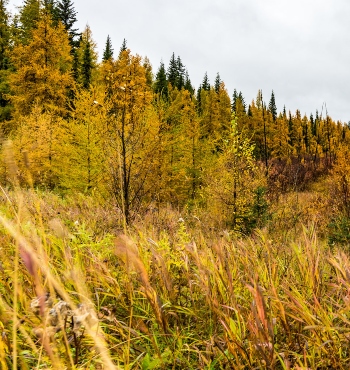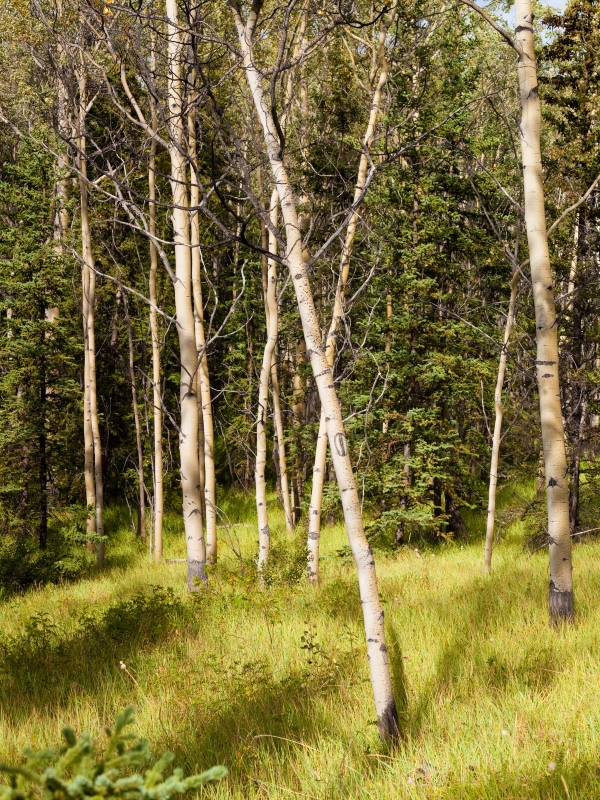Section 2.4
Interior Native Habitat
91.5% Native Habitat
The proportion of native habitat (circa 2017) was 91.5% in the Al-Pac FMA area. This means most of the area has not been impacted by human activities.
The area of native habitat at least 500 m from human footprint is 23.8% as a result of extensive edge effects. Edge effects due to linear features (e.g., seismic lines) substantially reduce habitat for species that prefer areas further away from human footprint, like the Woodland Caribou.
Introduction
Habitat loss due to human disturbance is a primary threat to biological diversity. In addition to the direct loss of native habitat, proximity of human footprint can indirectly impact biodiversity in nearby native vegetation. Some species, such as the Dark-eyed Junco and Chipping Sparrow, can use habitat that is adjacent to human footprint [1]. Other species prefer habitat that is more distant from human footprint, Woodland Caribou being the most well-known example.
Status of interior habitat is summarized for the Al-Pac FMA area and AEI.
Principle 8: Monitoring and Assessment
Criterion 8.2 – Monitoring and evaluating environmental and social impacts of activities carried out in the management unit
FSC Indicator 8.2.3 (5) is supported by providing up-to-date ‘best available information’ on forest patch sizes by reporting on interior native habitat in the Al-Pac FMA and AEI (linked to FSC Criterion 6.8).
Results
2019 Highlights
- The area of native habitat in the Al-Pac FMA area is 91.5%, almost 10% higher than the total area of native habitat in the AEI (81.9%).
- Area of interior native habitat at least 200 m from human footprint is approximately 50% in both landbases.
- The area of interior native habitat that is at least 500 m from human footprint decreases to 23.8% in the Al-Pac FMA area, compared to 31.9% in the AEI.
- Larger areas of native habitat far (> 500 m) from human footprint occur in the AEI because portions of this landscape are represented in protected areas which protect larger patches of native vegetation from development.
- Human development activities occur throughout the FMA area, and it is the distribution of this footprint, and seismic lines in particular, throughout the landscape that contributes to the fragmentation of native vegetation, reducing the area of native habitat at least 500 m from human footprint.

Photo: ABMI
References
Bayne, E., H. Lankau, and J. Tigner. 2011. Ecologically-based criteria to assess the impact and recovery of seismic lines: the importance of width, regeneration, and seismic density. Report No. 192. Edmonton, AB. 98 p.

Mixedwood forest
Photo: Stephan-Pietzko





